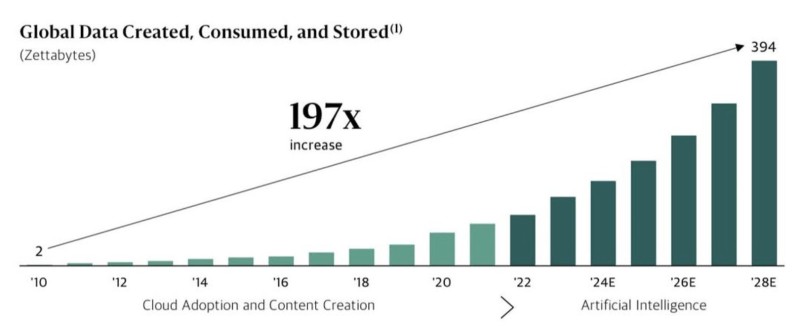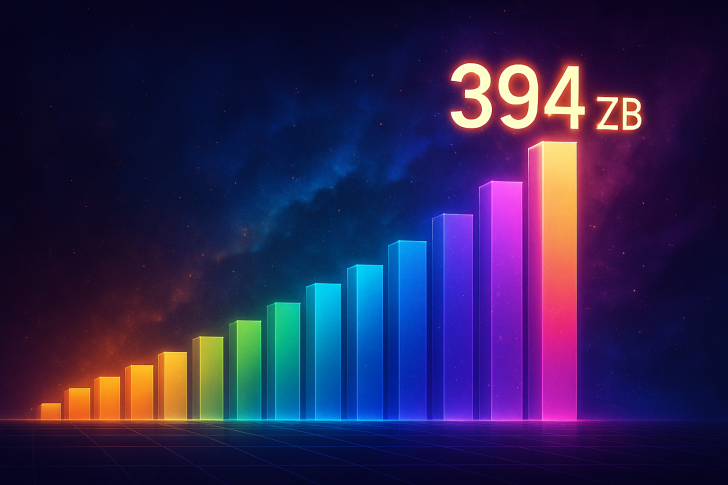⬤ Recent analysis reveals a stunning forecast from Blackstone showing global data volumes skyrocketing from just 2 zettabytes in 2010 to 394 zettabytes by 2028. That's a 197× increase, first driven by cloud adoption and now accelerating dramatically thanks to artificial intelligence. The steepest climb is projected between 2026 and 2028, marking a clear shift from content-driven growth to AI-powered expansion.

⬤ To put this in perspective, 394 zettabytes equals more than 100 times the total internet traffic humans generate each year. We're talking about 394 million terabytes—a figure that absolutely dwarfs traditional network capacity. The early 2010s saw modest, steady growth, but the AI era is bringing a vertical spike that's reshaping the entire data landscape.
⬤ This massive expansion is pushing governments worldwide to rethink tax policies, compliance rules, and infrastructure planning. As regulators scramble to draft new data-handling regulations, industries are sounding alarms that rushed tax changes could trigger bankruptcies among smaller data centers, spike energy costs, and drive tech talent toward countries with lighter regulatory burdens. Since data fuels modern AI systems, any disconnect between policy and operational reality could destabilize markets already struggling to meet demand.
⬤ Experts warn that today's companies simply aren't equipped to store or process the data volumes expected by 2028. This gap means poorly designed regulations could slow innovation right when global competition depends on data-driven breakthroughs. For businesses building AI training systems, retrieval tools, and personalized automation, the 394-zettabyte future represents both massive opportunity and a regulatory challenge that needs smart, fast action to avoid choking off growth.
 Peter Smith
Peter Smith

 Peter Smith
Peter Smith


